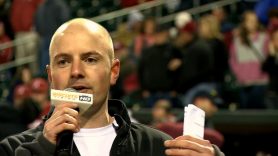- Diseases
- Acoustic Neuroma (14)
- Adrenal Gland Tumor (24)
- Anal Cancer (66)
- Anemia (2)
- Appendix Cancer (16)
- Bile Duct Cancer (28)
- Bladder Cancer (68)
- Brain Metastases (28)
- Brain Tumor (228)
- Breast Cancer (712)
- Breast Implant-Associated Anaplastic Large Cell Lymphoma (2)
- Cancer of Unknown Primary (4)
- Carcinoid Tumor (8)
- Cervical Cancer (154)
- Colon Cancer (164)
- Colorectal Cancer (110)
- Endocrine Tumor (4)
- Esophageal Cancer (42)
- Eye Cancer (36)
- Fallopian Tube Cancer (6)
- Germ Cell Tumor (4)
- Gestational Trophoblastic Disease (2)
- Head and Neck Cancer (6)
- Kidney Cancer (124)
- Leukemia (344)
- Liver Cancer (50)
- Lung Cancer (288)
- Lymphoma (284)
- Mesothelioma (14)
- Metastasis (30)
- Multiple Myeloma (98)
- Myelodysplastic Syndrome (60)
- Myeloproliferative Neoplasm (4)
- Neuroendocrine Tumors (16)
- Oral Cancer (98)
- Ovarian Cancer (172)
- Pancreatic Cancer (166)
- Parathyroid Disease (2)
- Penile Cancer (14)
- Pituitary Tumor (6)
- Prostate Cancer (144)
- Rectal Cancer (58)
- Renal Medullary Carcinoma (6)
- Salivary Gland Cancer (14)
- Sarcoma (234)
- Skin Cancer (294)
- Skull Base Tumors (56)
- Spinal Tumor (12)
- Stomach Cancer (60)
- Testicular Cancer (28)
- Throat Cancer (90)
- Thymoma (6)
- Thyroid Cancer (98)
- Tonsil Cancer (30)
- Uterine Cancer (78)
- Vaginal Cancer (14)
- Vulvar Cancer (18)
- Cancer Topic
- Adolescent and Young Adult Cancer Issues (20)
- Advance Care Planning (10)
- Biostatistics (2)
- Blood Donation (18)
- Bone Health (8)
- COVID-19 (362)
- Cancer Recurrence (120)
- Childhood Cancer Issues (120)
- Clinical Trials (622)
- Complementary Integrative Medicine (22)
- Cytogenetics (2)
- DNA Methylation (4)
- Diagnosis (224)
- Epigenetics (6)
- Fertility (62)
- Follow-up Guidelines (2)
- Health Disparities (14)
- Hereditary Cancer Syndromes (122)
- Immunology (18)
- Li-Fraumeni Syndrome (8)
- Mental Health (116)
- Molecular Diagnostics (8)
- Pain Management (64)
- Palliative Care (8)
- Pathology (10)
- Physical Therapy (18)
- Pregnancy (18)
- Prevention (882)
- Research (384)
- Second Opinion (74)
- Sexuality (16)
- Side Effects (596)
- Sleep Disorders (10)
- Stem Cell Transplantation Cellular Therapy (216)
- Support (404)
- Survivorship (324)
- Symptoms (182)
- Treatment (1764)
Motivating awareness after a germinoma diagnosis
2 minute read | Published March 05, 2015
Medically Reviewed | Last reviewed by an MD Anderson Cancer Center medical professional on March 05, 2015
When Chase Jones was an 18-year-old baseball player at The University of North Carolina, he was diagnosed with germinoma, a type of brain tumor. The rest of his team shaved their heads in support.
Their gesture had a huge impact on Chase and led him to start the Vs. Cancer Foundation. The organization empowers sports teams, from little league to the pros, to raise awareness and money in hopes of ending childhood cancer.
Since it started in 2013, Vs. Cancer has raised more than $1.5 million for children's hospitals and cancer research. They've worked with The University of North Carolina, Duke University, Texas A&M University and the Seattle Mariners, among others.
"Every age, every sport, every form -- college, high school, youth -- we've given them the platform to make a difference," Chase says. "As a cancer survivor, I couldn't be more excited about that."
Finding hope during pineal region germinoma treatment
One day after baseball practice, Chase walked off the field with a sharp headache. It was unlike any pain he'd known before. He never thought it was a brain tumor symptom.
Chase was diagnosed with stage four pineal region germinoma. This type of tumor starts in the center of the brain and had metastasized to his spine.
There were few treatment options for him close to home. So, after a series of surgeries, chemotherapy and radiation at a North Carolina hospital, Chase came to the MD Anderson Proton Therapy Center.
Despite being far from his friends and family, Chase felt at home right away.
"The greatest feeling was walking in knowing I would walk out cancer-free," he says.
Helping others beat the odds
Today, Chase is 26, cancer-free and helping athletes help kids with cancer.
"Everybody has been affected by cancer, and athletes have a platform within their communities. They can do so much because of the position they're in," Chase says.
Through Vs. Cancer, teams are encouraged to host a creative fundraising event. Examples include a head shaving event, 100-inning game, relay race, kickball game, or just adding a yellow ribbon to the jerseys. Then, teams make a donation.
"It's about showing athletes that they can make a difference," Chase says.
"I don't know why I survived cancer. I don't know why I defied the odds. But because of that, I will be doing this as long as there are kids battling cancer."

As a cancer survivor, I couldn't be more excited about giving others the ability to make a difference.
Chase Jones
Survivor
